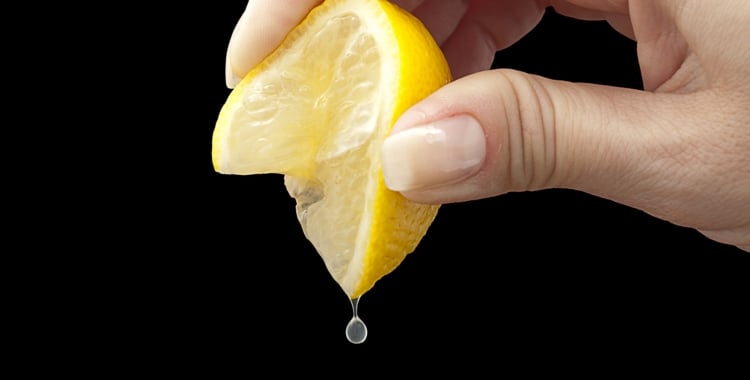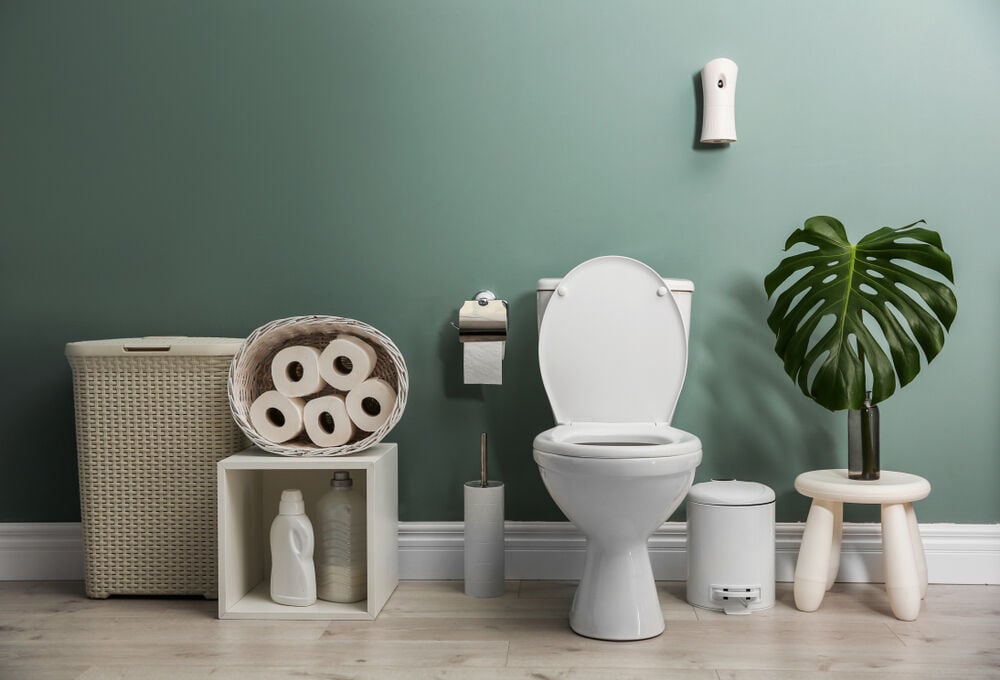Do you feel like you have to pee all the time? Today, we’re investigating the causes of frequent urination and sharing some tips for how to pee less often.
-
Tracking cycle
-
Getting pregnant
-
Pregnancy
-
Help Center
-
Flo for Partners
-
Anonymous Mode
-
Flo app reviews
-
Flo Premium New
-
Secret Chats New
-
Symptom Checker New
-
Your cycle
-
Health 360°
-
Getting pregnant
-
Pregnancy
-
Being a mom
-
LGBTQ+
-
Quizzes
-
Ovulation calculator
-
hCG calculator
-
Pregnancy test calculator
-
Menstrual cycle calculator
-
Period calculator
-
Implantation calculator
-
Pregnancy weeks to months calculator
-
Pregnancy due date calculator
-
IVF and FET due date calculator
-
Due date calculator by ultrasound
-
Medical Affairs
-
Science & Research
-
Pass It On Project New
-
Privacy Portal
-
Press Center
-
Flo Accuracy
-
Careers
-
Contact Us
That Constant Feeling of Having to Pee... 17 Causes of Frequent Urination in Women


Every piece of content at Flo Health adheres to the highest editorial standards for language, style, and medical accuracy. To learn what we do to deliver the best health and lifestyle insights to you, check out our content review principles.
The constant feeling of having to pee is associated with several medical conditions.
Urinary tract infections
A urinary tract infection (UTI) is an infection of the urinary system organs, including the ureters, bladder, kidneys, and urethra. The female urinary system is usually more susceptible to developing urinary tract infections than the male urinary system. One of the strongest symptoms of a UTI is a strong, persistent urge to urinate.
Incontinence
Many people experience urine leakage at some point in their lives. The condition is called urinary incontinence, loss of bladder control, or involuntary leakage of urine. It is quite common.
Possible causes of incontinence include pregnancy, changes with age, neurological disorders, and bacterial infections (they can irritate the bladder, which triggers a strong urge to urinate and sometimes incontinence). Sometimes, hard and compacted stool in the rectum makes the nerves of the bladder hyperactive, leading to a constant feeling of having to pee.
Menopause
Many people experience bladder issues after entering menopause. When women reach menopause, the ligaments and muscles supporting the pelvic floor become weaker. Due to the decrease in estrogen levels, these ligaments and tissues lose their elasticity and strength. Pressure on the bladder caused by laughing, sneezing, and coughing can result in urine leakage or incontinence.
Kidney stones
Kidney stones are hard forms of minerals and salt often made up of calcium or uric acid. They develop inside the kidney and may travel to other parts of the urinary tract, causing discomfort and pain. An increased need to pee is a sign that the stone has traveled into the lower area of the urinary tract.
Bladder stones
Bladder stones develop when the minerals in concentrated urine crystallize. Sometimes these bladder stones do not cause any symptoms. However, if the stones irritate the bladder wall or block the flow of urine, it can cause symptoms such as blood in the urine, pain in the lower abdomen, and frequent urination.
Bladder infections
The most common symptom of bladder infection is Bacteria that enter through the urethra and move into the bladder can cause a bladder infection.
Bladder neck obstruction
Primary bladder neck obstruction is a disorder in which the urinary bladder neck is unable to open enough and can sometimes block the flow of urine. It is a functional obstruction, meaning that there are no other anatomic obstructions (e.g., benign prostatic enlargement or genitourinary prolapse). Primary bladder neck obstruction can cause a variety of symptoms including incontinence.
Take a quiz
Find out what you can do with our Health Assistant

Cystitis
Cystitis is an inflammation of the urinary bladder and is mostly caused by a bacterial infection.

Track symptoms and patterns
Learn to spot patterns in your cycle as they can provide insight into underlying medical conditions
The symptoms of this condition include a feeling of pressure in the lower abdomen, pelvic pain, and an increased and more frequent urge to urinate.
Urethritis
Urethritis is a disorder in which the urethra, which carries pee from the bladder outside the body, becomes inflamed. It happens commonly due to a
Urethral stricture
A urethral stricture is scarring in or around the urethra, which causes narrowing or blocking of the passage through which the urine flows out of the bladder. Urethral stricture can result from bladder infection, injury, or inflammation. The male urethra is more prone to stricture than the female urethra. The disorder causes frequent urination issues and can also result in complications like urinary tract infections, urinary retention, and kidney damage.
Pyelonephritis
Pyelonephritis is an inflammation of the kidney, particularly of the renal pelvis. In most cases, it is caused by a bacterial infection that starts in the lower urinary tract. There is an increased risk of developing pyelonephritis during pregnancy.
The female urethra is much shorter than the male urethra, making it easier for bacteria to enter the female body and increasing the likelihood of urinary and kidney infections and acute pyelonephritis. This condition increases the urge to urinate more frequently.
Hydronephrosis
Hydronephrosis is a condition characterized by stretching and swelling in the kidneys caused by the inability of urine to completely drain out of the kidney. This is typically caused by a blockage or obstruction. As a result, the kidney becomes so engorged with urine that it exerts pressure on the nearby organs. If this condition is not addressed or untreated, the kidneys can become permanently damaged. Frequent urination and an increased urge to urinate are some of the symptoms of hydronephrosis.
Autonomic neuropathy
Autonomic neuropathy is a disorder that affects nerves that are not under a person’s conscious control. In that case, involuntary bodily functions (including urination) are impaired.
Reactive arthritis
Reactive arthritis is an inflammatory condition in which there is joint pain, stiffness, and swelling triggered by an infection in the body. Most commonly, a sexually transmitted infection or bacterial infection in the intestines triggers the development of reactive arthritis. It may also result in symptoms in the urinary tract like an increased and more frequent urge to urinate.
Multiple sclerosis
Multiple sclerosis (MS) is a disease in which the immune system damages the protective membrane of the functional nerves. Urinary bladder problems are common symptoms of MS. MS can disrupt the nerve signals that direct the movement of urine in the body, sometimes causing it to flow out involuntarily.
Ovarian cancer
Ovarian cancer often has no symptoms in the early stages, so it may be difficult to diagnose. It usually develops as a painless lump on the ovary and enlarges gradually. It does not show any symptoms until it becomes serious. One of the possible signs of an ovarian mass is an increased and more frequent urge to pee.
Bladder cancer
Cancer cells that develop tumors in the lining of the urinary bladder covering the bladder’s muscular walls can cause symptoms related to urination. Bladder cancer is often typified by an increased urge to pee and visible blood in the urine.

How to pee less often: frequent urination treatment
It is important to understand the root cause of frequent urination in order to address the issue. There have been significant advances in medical science and disease treatment, improving the quality of life for lots of people. Health issues like frequent urination can often be addressed and treated. Consult your health care provider for relevant treatment.
Bladder retraining
In this therapy, over the course of 12 weeks, the time between urinating is gradually increased. This helps retrain the bladder to signal the body to pee less frequently.
Dietary changes
Eating food that does not irritate the bladder may help reduce the need to pee constantly. Caffeine, chocolate, tomato-based foods, alcohol, and spicy food can all irritate the bladder. Fiber-rich foods can help prevent constipation, which makes the symptoms of an overactive bladder worse.
Monitoring fluid intake
Avoid drinking just before bedtime (which can lead to nighttime urination).
Kegel exercises
These exercises strengthen the muscles around the bladder and urethra, improving bladder control and reducing the urgency and frequency of needing to pee. Exercising the pelvic muscles for five minutes three times a day can help improve bladder performance.
Medication
There are FDA-approved drugs that can treat frequent urination, but it’s important to consult with a health care provider for an appropriate prescription.
Botox
When injected into the bladder muscle, botox relaxes the urinary bladder and increases its storage capacity, reducing the instances of leakage.
Small nerve simulators
Devices implanted under the skin can manipulate contractions in the organs and muscles within the pelvic floor.


Hey, I'm Anique
I started using Flo app to track my period and ovulation because we wanted to have a baby.


The Flo app helped me learn about my body and spot ovulation signs during our conception journey.


I vividly
remember the day
that we switched
Flo into
Pregnancy Mode — it was
such a special
moment.
Real stories, real results
Learn how the Flo app became an amazing cheerleader for us on our conception journey.




